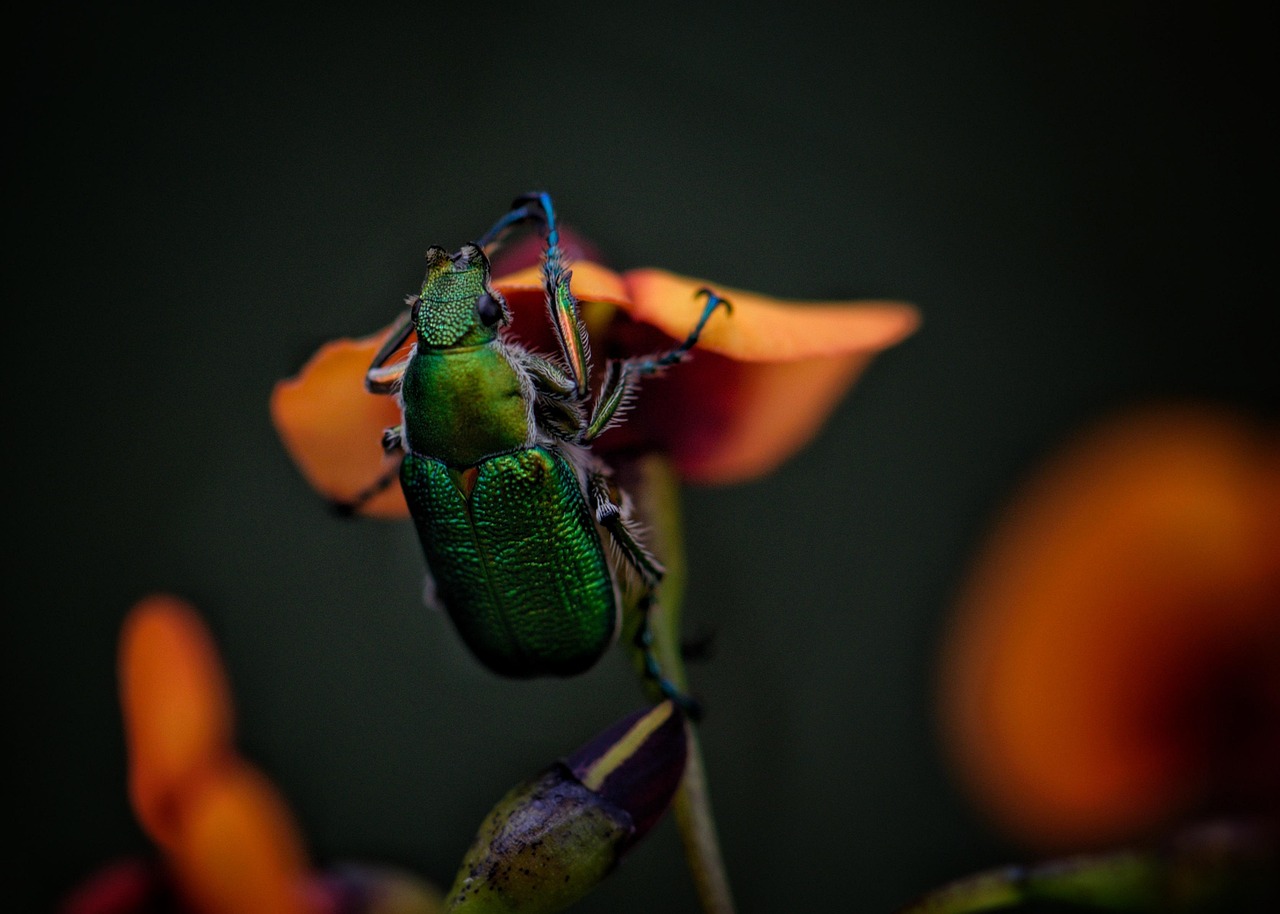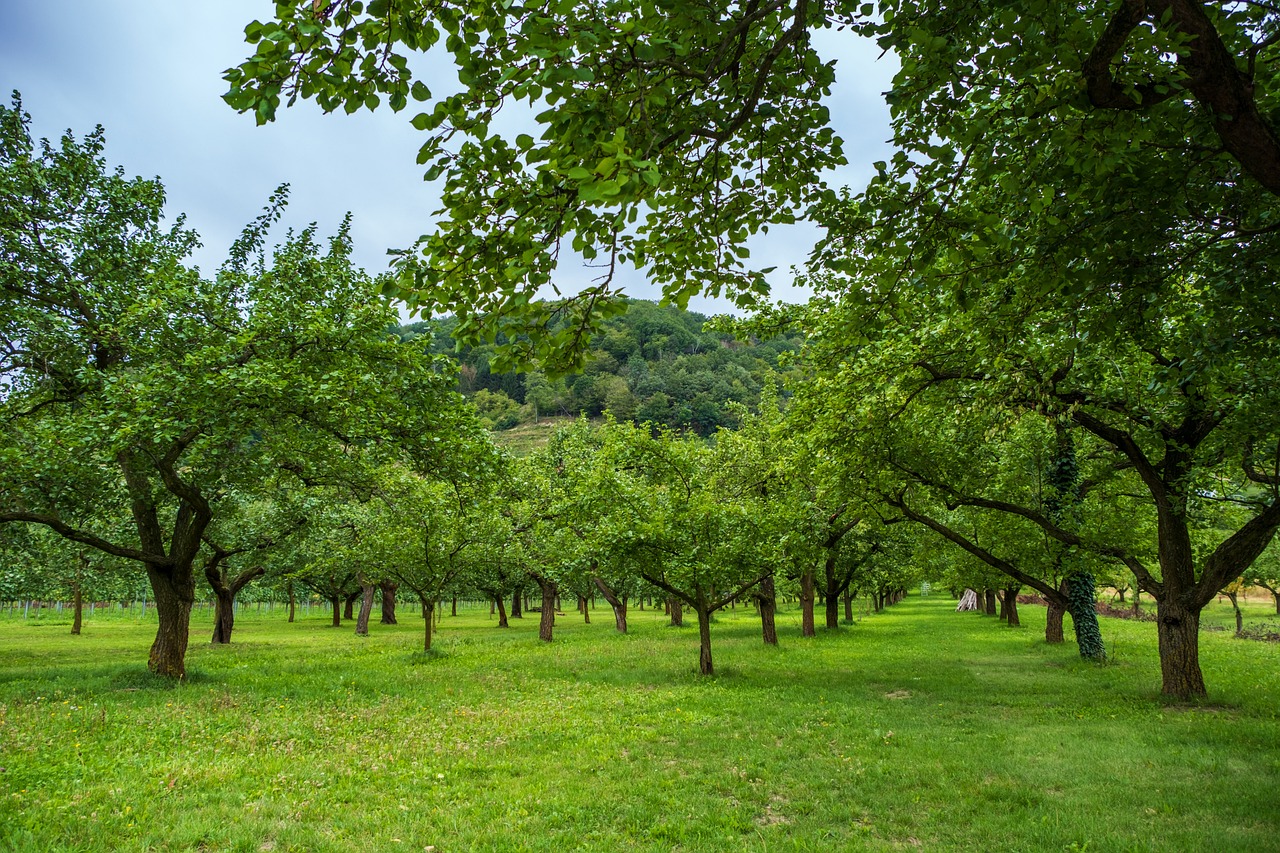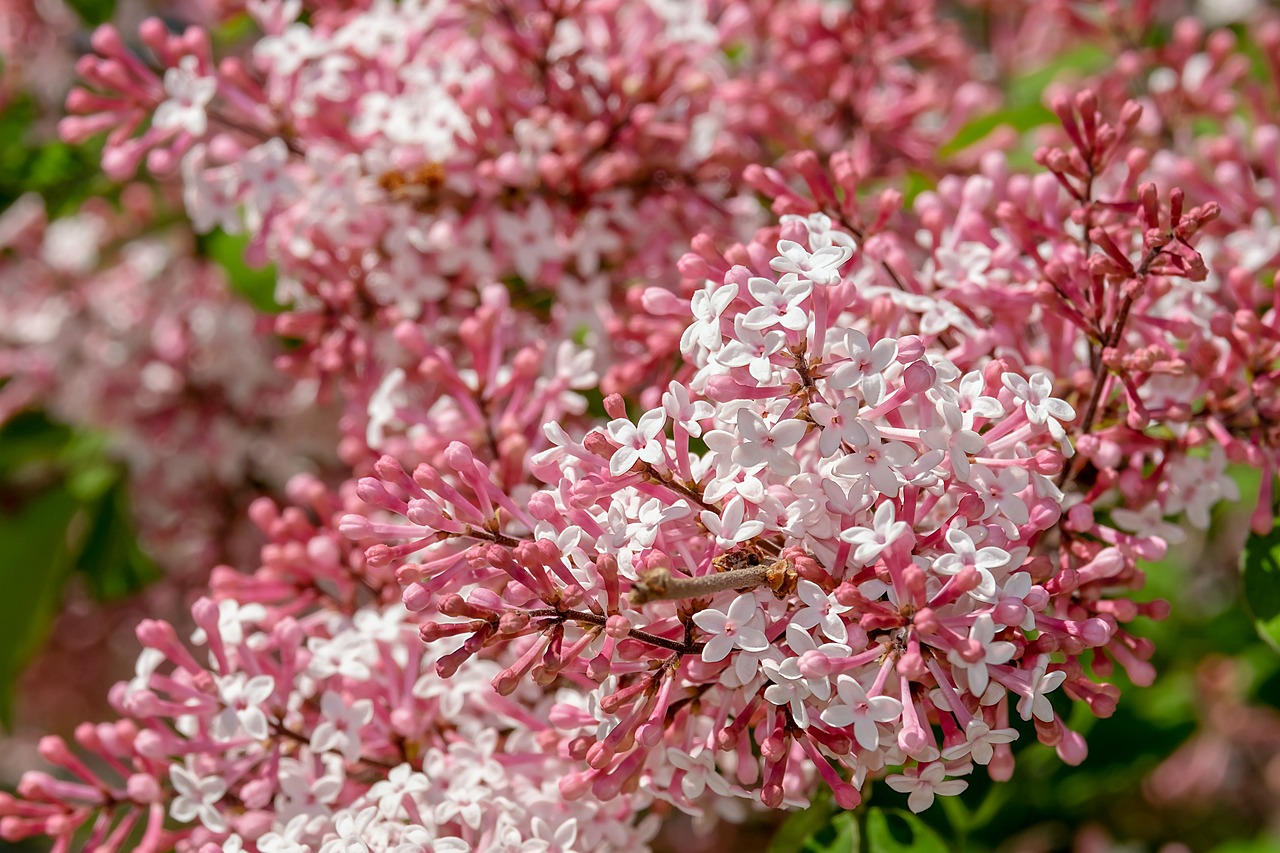Small ornamental trees, often referred to as jewel box trees, bring a unique charm to flower beds and gardens. These trees not only enhance the aesthetic appeal of outdoor spaces but also provide various benefits, such as shade, habitat for wildlife, and improved air quality. With a variety of options available, gardeners can choose trees that bloom beautifully, have striking foliage, or produce vibrant fruits. This article explores the different types of small ornamental trees suitable for flower beds, their characteristics, and tips for selecting and maintaining them.
Ornamental trees are typically smaller in stature compared to their larger counterparts. They are ideal for residential gardens, urban landscapes, and public parks where space may be limited. Their compact size allows them to fit comfortably among other plants without overwhelming the surrounding flora. Additionally, many of these trees have seasonal interest, offering colorful blooms in spring, lush foliage in summer, and stunning fall colors.

One of the key advantages of small ornamental trees is their versatility. They can serve multiple purposes in a garden setting. For instance, they can act as focal points, provide privacy screening, or create vertical interest in flower beds. When chosen thoughtfully, these trees can complement a variety of themes and styles in landscape design.
Here are some notable characteristics and benefits of small ornamental trees:
- Compact Size: Ideal for small spaces, allowing for creative landscaping.
- Seasonal Interest: Many feature beautiful flowers, vibrant foliage, and striking fruit.
- Wildlife Habitat: Provide food and shelter for birds, insects, and other wildlife.
- Low Maintenance: Generally require less care than larger trees.
- Environmental Benefits: Improve air quality and contribute to urban cooling.
Choosing the Right Small Ornamental Trees
Selecting the right small ornamental tree for your garden involves considering several factors. These include the climate, soil type, sunlight exposure, and the overall design of your garden. Here are some essential tips to guide you in making an informed choice:
- Climate Suitability: Ensure the tree species you select can thrive in your local climate. Some trees prefer warmer climates while others are more tolerant of cold.
- Soil Conditions: Test your soil to understand its pH and drainage capabilities. Choose trees that are well-suited to your soil type.
- Sunlight Requirements: Observe the amount of sunlight your garden receives. Some trees thrive in full sun while others prefer partial shade.
- Design Considerations: Think about how the tree will fit into your overall garden design. Consider height, shape, and color when making your selection.
Beyond these considerations, it’s also essential to research the specific care requirements of each tree species. While many small ornamental trees are relatively low maintenance, some may require more attention in terms of watering, pruning, or pest management.
As you explore the world of small ornamental trees, you will discover an array of stunning options that can elevate your garden’s beauty and functionality. From flowering varieties that create breathtaking displays to evergreen options that provide year-round interest, these jewel box trees are sure to inspire your landscaping endeavors.
In the following sections, we will delve deeper into specific types of small ornamental trees that are perfect for flower beds, including their unique features and care tips to help you achieve a thriving garden.
Popular Small Ornamental Trees for Flower Beds
When selecting small ornamental trees for flower beds, it is essential to consider varieties that not only fit well in smaller spaces but also provide visual appeal throughout the seasons. Below are some of the most popular small ornamental trees that can enhance your garden, along with their unique characteristics.
1. Japanese Maple (Acer palmatum)
The Japanese Maple is renowned for its delicate foliage and stunning colors. This tree typically grows to a height of 10 to 15 feet, making it an excellent choice for smaller gardens.
- Foliage: Leaves can vary from deep green to vibrant red or purple, depending on the variety.
- Growth Habit: Often features a graceful, layered branching structure.
- Seasonal Interest: Provides beautiful autumn color, making it a highlight in fall landscapes.
2. Flowering Dogwood (Cornus florida)
The Flowering Dogwood is a small tree that blooms in spring, showcasing stunning white or pink flowers. It typically reaches heights of 15 to 30 feet, making it suitable for various garden sizes.
- Blooms: Large, showy flowers that attract pollinators.
- Fall Foliage: Leaves turn vibrant shades of red and orange in fall.
- Wildlife Support: Produces berries that attract birds and other wildlife.
3. Redbud (Cercis canadensis)
The Redbud is a stunning ornamental tree that bursts into bloom with small pink flowers in early spring before the leaves emerge. It typically grows to a height of 20 to 30 feet.
- Flowering Time: Early spring, providing vibrant color before many other trees leaf out.
- Leaf Shape: Heart-shaped leaves that turn yellow in fall.
- Growth Form: Features a unique, spreading growth habit that adds character to any garden.
4. Crape Myrtle (Lagerstroemia indica)
Crape Myrtle is famous for its long-lasting summer blooms, which can range from white to shades of pink, red, and purple. This tree usually grows between 10 and 20 feet tall.
- Blooming Season: Flowers from late spring through summer.
- Foliage: Attractive, glossy leaves that turn vibrant colors in fall.
- Bark Texture: Peeling bark adds visual interest throughout the year.
5. Dwarf Alberta Spruce (Picea glauca ‘Conica’)
The Dwarf Alberta Spruce is a compact evergreen that maintains a conical shape. It typically grows to about 10 to 12 feet tall, making it perfect for smaller spaces.
- Year-Round Greenery: Provides lush greenery throughout the year.
- Low Maintenance: Requires minimal pruning and care.
- Garden Versatility: Works well as a standalone feature or in group plantings.
These small ornamental trees are just a few examples of the vast array available to gardeners. Each variety brings its own unique beauty and benefits, making them excellent choices for enhancing flower beds and garden landscapes. When planning your garden, consider how these trees will interact with other plants and the overall design aesthetic you wish to achieve.
Care Tips for Small Ornamental Trees

Caring for small ornamental trees involves understanding their specific needs and providing the right conditions for growth. Here are some general tips to help you maintain healthy and vibrant trees in your flower beds:
- Watering: Ensure consistent moisture, particularly during dry spells. Newly planted trees may require more frequent watering until established.
- Fertilization: Use a balanced fertilizer in spring to promote healthy growth and flowering.
- Pruning: Regular pruning helps maintain shape and remove any dead or diseased branches. Always use clean tools to prevent infection.
- Pest Management: Monitor for pests and diseases. Early detection can help prevent more significant issues later on.
By choosing the right small ornamental trees and providing them with proper care, you can create a stunning and inviting garden space that showcases beauty throughout the year.

Designing with Small Ornamental Trees

Incorporating small ornamental trees into your garden design can elevate the aesthetic appeal and functionality of your landscape. These trees can serve as focal points, provide structure, and enhance the overall theme of your outdoor space. Here are some effective ways to integrate small ornamental trees into your flower beds.
Creating Focal Points
One of the most effective uses for small ornamental trees is to create focal points within your garden. By placing a striking tree in a prominent location, you draw the eye and add interest to the landscape.
- Choose Unique Varieties: Select trees with distinctive foliage, flowers, or bark to stand out.
- Placement: Position the tree where it can be easily seen from various angles, such as near a walkway or at the end of a garden path.
- Surrounding Plants: Pair the tree with complementary plants that enhance its beauty. Consider foliage color and texture to create visual harmony.
Layering for Depth
Layering different plants and trees creates depth and dimension in your garden. Small ornamental trees can provide a vertical element that contrasts with lower-growing flowers and shrubs.
- Height Variation: Use taller ornamental trees as a backdrop for shorter flowering plants to add layers of height.
- Color Coordination: Choose trees that bloom at different times of the year to ensure continuous color throughout the seasons.
- Textural Contrast: Mix smooth-leaved trees with those that have more textured or serrated leaves for added interest.
Creating Privacy Screens
Small ornamental trees can also be used strategically to create privacy screens or living barriers. This approach allows you to define spaces in your garden while enhancing its beauty.
- Planting Arrangement: Group several trees together to form a dense screen. Choose varieties that grow closely together without overcrowding.
- Height Considerations: Select tree species that will grow tall enough to offer privacy while remaining manageable in size.
- Year-Round Coverage: Opt for evergreen trees for year-round privacy, or mix deciduous varieties for seasonal interest.
Seasonal Color and Interest
Small ornamental trees can provide seasonal color and interest that enhances the beauty of your flower beds throughout the year. Here are some considerations for maximizing seasonal impact:
Spring Blooms
Many small ornamental trees bloom in spring, providing stunning displays of color after the winter months.
- Cherry Blossoms: Trees like the Kwanzan Cherry provide breathtaking pink blooms in early spring.
- Redbuds: The delicate pink flowers of Redbud trees are a herald of spring and add vibrant color to any garden.
Summer Foliage
During the summer months, the lush green foliage of ornamental trees offers shade and coolness, contributing to a pleasant outdoor environment.
- Crape Myrtle: Known for its long-lasting summer flowers, Crape Myrtle also has attractive green leaves that provide ample shade.
- Japanese Maple: The delicate leaves of Japanese Maple offer a beautiful backdrop for summer blooms.
Autumn Colors
The fall season brings vibrant colors as many small ornamental trees transition from green to shades of red, orange, and yellow.
- Sweetgum: Sweetgum trees have stunning star-shaped leaves that turn brilliant colors in autumn.
- Flowering Dogwood: As mentioned earlier, Flowering Dogwoods showcase beautiful fall foliage, adding warmth to your landscape.
Winter Structure
Even in winter, small ornamental trees can contribute structure and interest to your garden. Their shapes can create beautiful silhouettes against the winter sky.
- Bark Texture: Consider varieties with interesting bark textures or colors that stand out in the winter landscape.
- Evergreen Options: Dwarf Alberta Spruce provides lush greenery during winter months, maintaining visual interest.
By thoughtfully incorporating small ornamental trees into your flower beds, you can create a dynamic and visually appealing garden space that changes with the seasons. The right selection and placement of these trees will enhance your landscape while providing enjoyment throughout the year.
Additional Considerations for Planting Small Ornamental Trees
While selecting and planting small ornamental trees can dramatically enhance your garden, there are additional considerations to keep in mind to ensure their success. Understanding the unique needs of these trees will help you create a thriving landscape that is both beautiful and sustainable.
Soil Quality and Preparation
The quality of the soil plays a crucial role in the health of small ornamental trees. Here are some tips to prepare your soil before planting:
- Testing Soil: Conduct a soil test to determine pH and nutrient levels. This will guide your amendments.
- Amending Soil: Improve soil structure by adding organic matter such as compost or well-rotted manure.
- Drainage: Ensure the planting area has good drainage. Poor drainage can lead to root rot and other issues.
Spacing and Placement
Proper spacing is essential for the growth and health of small ornamental trees. Overcrowding can lead to competition for nutrients, light, and water.
- Follow Guidelines: Refer to specific planting guidelines for each tree species regarding spacing requirements.
- Avoiding Competition: Consider the mature size of the tree when planting near other plants or structures.
- Sunlight Exposure: Ensure trees are placed in appropriate sunlight conditions according to their needs.
Mulching and Weed Control
Applying mulch around the base of your small ornamental trees can greatly benefit their growth. Here’s how:
- Moisture Retention: Mulch helps retain moisture in the soil, which is particularly important during dry spells.
- Weed Suppression: A layer of mulch can inhibit weed growth, reducing competition for nutrients.
- Temperature Regulation: Mulch helps regulate soil temperature, providing a stable environment for root development.
Final Thoughts
Small ornamental trees are a wonderful addition to any garden, providing beauty, structure, and seasonal interest. By carefully selecting the right species and considering their specific needs, gardeners can create stunning flower beds that flourish throughout the year. These jewel box trees not only enhance the aesthetics of outdoor spaces but also contribute positively to the environment by supporting local wildlife and improving air quality.
The integration of small ornamental trees into your landscape allows for creativity in design. Whether you seek to create a serene retreat, a vibrant family space, or an inviting entrance, these trees offer versatility and charm. From the vibrant blooms of spring to the rich colors of autumn, small ornamental trees provide endless opportunities for enjoyment and inspiration.
As you embark on your gardening journey, remember to take into account the unique characteristics and requirements of each tree species. Proper care, attention to detail in planting, and thoughtful design will result in a thriving garden that showcases the beauty of small ornamental trees for years to come. With the right approach, your flower beds will transform into a picturesque paradise that reflects your personal style and enhances your outdoor living experience.
